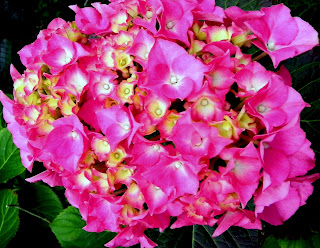Tasmania is Australia's only island state, rich in distinctive landscapes, climate and culture. The diverse landscape belies its small size with glacial mountains, rolling green hills and an impressive wilderness that is one of only three large temperate forests in the southern hemisphere. Tasmanians take immense pride in their island and much of it remains untouched by human habitation, protected by the Tasmanian Wilderness World Heritage Area. This allows visitors to explore the national parks and trek through some of the most rugged and scenic trails in the world. Our Tasmanian tour guide, Caroline Tripper, also shared with us some of the dark and somber past of this lovely land. For thousands of years, aboriginal tribes lived here in total isolation; however, their peaceful existence was shattered by the establishment of a British penal colony in the early 1800's. Settlements prospered from the hard labor of convicts incarcerated in Port Arthur. Sadly, the aborigines were treated more horribly than the convicts and eventually they were all abolished from the island in less than one hundred years span.
Hobart is the capital of Tasmania; it is a port city aided by the prosperious economy of meats, crops, fruits, and timber that are regularly sent to foreign ports on a daily basis. We stayed at the Grand Chancellor, a centrally located hotel on front of the old wharf. Hobart is spread between the banks of the Derwent river and the summit of Mount Wellington. From the old wharf, the first settlers founded the village of Battery Point, Hobart's most historical suburb and a landmark filled with narrow gas-lit streets lined with tiny fishermen and worker houses, along the cottage gardens, many of which are classified by the National Trust Heritage. Arthur Circus is a ring of cottages surrounding the old village green at the heart of Battery Point, so aptly named after the battery of guns that was established at this point in 1818 to provide Hobart with some type of coastal defense against foreign invaders. Arthur Circus cottages were originally built for the officers of the garrison and today these cottages are registered and protected by the National Trust Heritage.
South of Hobart there is a region filled with pleasant rural landscapes and seascapes, and some of the world's wildest scenery within the Hartz Mountains. The Huon River was first explored in 1792 by French explorers Bruni and Huon. Their names and the names of their ships, Recherche and the Esperance, are now synonymous with this picturesque area south of Hobart. The Huon River is the fourth largest river in Tasmania and it runs through the fertile Huon valley, surrounded by the colorful fruit valleys and the peaks of the World Heritage Area. This southern region is bountiful with hidden bays, fruit orchards(cherries, apricots, pears, apples), forests, beautiful beaches and Bruny Island. Two of Tassie's signature products are the Huon pine growing along the river and the beautiful apple orchards.
The Hartz Mountains are twin mountains located 55km south of Hobart. This park covers around 17,000 acres of land which are now part of the World Heritage Area. Its most distinctive feature is the dolerite range jutting from the landscape with sharp edges that have been sculted by repeated glaciations.
A track cut from Geeveston to the Hartz Mountains in the 1840's was one of the most popular and earliest of the bushwalks due to its proximity to Hobart. While in this region, we visited the Tahune Forest Airwalk, where we came in contact with Tasssie's forest trees. The varied vegetation included eucalyptus forests, stringybarks, myrtle, sassafras, leatherwood, gum trees, and the Tasmanian waratah. Along the airwalk we also enjoyed breathtaking views of the Huon river.




